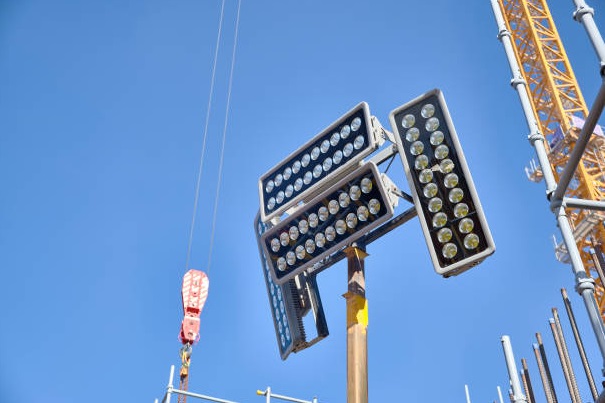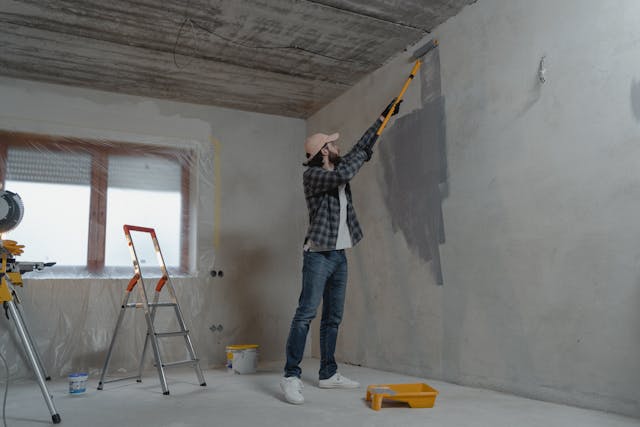Going off-grid sounds like freedom. No utility bills. No blackouts. Just your own power, on your own terms. But what’s it actually going to cost? And how do you make it all work in a smaller space without sacrificing comfort?
This guide breaks down the real costs of building an off-grid solar system in 2025—and shows you how to make smart space-saving choices while you’re at it.
What Is an Off-Grid Solar System?
An off-grid setup powers your home without any connection to the public grid. It runs on solar panels and batteries, giving you control over how you generate and use electricity.
A typical off-grid solar system includes
- Solar panels (your main energy source)
- A battery system (to store energy)
- A solar charge controller (to manage energy flow)
- An inverter (to power appliances with AC electricity)
Once installed, it’s self-sufficient. There’s no backup from the grid, so you’ll need to size everything right for your actual needs.
Why People Go Off-Grid
Some want energy freedom. Others live far from the nearest utility line. Some want resilience during outages. Others just want to cut back on bills and impact.
Going off-grid gives you energy control. It lowers long-term costs and supports self-sufficiency, especially during extreme weather or emergencies. Plus, off-grid living pairs well with a smaller, more intentional lifestyle—especially if your space is designed to support it.
Don’t Just Go Off-Grid—Plan for Space, Too
Smaller off-grid homes and cabins come with layout challenges. One upgrade that makes a real difference: a Murphy cabinet bed.
If your guest room doubles as your office, or your cabin has only one main room, a Murphy cabinet bed gives you real sleep comfort without wasting space. It folds into a cabinet when not in use, making room for movement, meals, or work during the day. And unlike futons or air mattresses, you get an actual mattress and better sleep.
In small off-grid homes where every watt and square foot counts, this kind of upgrade makes life more livable.
What Affects the Cost of an Off-Grid Solar System?
1. System Size
The bigger your energy needs, the bigger your system. If you’re just charging devices and running a few lights, a smaller system works. If you’re powering a fridge, HVAC, or water pump, costs go up.
2. Solar Panels
Panels are priced by efficiency and durability. Monocrystalline panels produce more energy in less space but cost more upfront. Polycrystalline panels are cheaper but less efficient. Choose based on your available roof or ground space and daily usage.
3. Batteries
You need batteries to run your home at night or on cloudy days. Lithium batteries last longer but cost more. Lead-acid batteries are cheaper but degrade faster. The number you need depends on your daily usage and storage goals.
“The average lifespan of most solar panels is 25 to 30 years. Lead-acid solar batteries last 3 to 5 years. Lithium-ion solar batteries last 10 to 15 years.”
— HomeGuide
4. Inverter
The inverter turns solar power into usable power for appliances. Larger homes or high-draw devices need bigger inverters. Poor inverter choices can create bottlenecks and inefficiencies.
5. Installation
You can install the system yourself if you’re confident. Otherwise, hiring a pro will cost more but may save you from future repairs. Installation costs vary by system size, local labor rates, and how complex your setup is.
6. Where You Live
Sun hours matter. More sun means you need fewer panels. Cloudy or snowy areas need more gear to produce the same amount of power. Roof angle, shade, and seasonal changes all play a role.

Photo by M K from Pexels
Off-Grid Solar Cost Breakdown
| Component | Low-End | High-End |
| Solar Panels | $2,500 | $15,000 |
| Inverter | $1,000 | $3,500 |
| Battery System | $5,000 | $15,000 |
| Mounting Gear | $500 | $1,500 |
| Installation | $1,000 | $4,000 |
What That Buys You:
- $5K–$10K: Run lights, fans, small appliances.
- $10K–$25K: Power a modest home or cabin full-time.
- $25K+: Handle full home use with HVAC, laundry, and heavy loads.
Start with what you really need. Overbuilding costs more. Underbuilding leads to power shortages.
How to Keep Costs Down
- Use a solar kit: Pre-matched gear reduces guesswork. Find Retailers who offer complete kits that take the complexity out of matching components for your specific power needs.
- Install it yourself: If you know what you’re doing.
- Shop used: Panels and inverters often last 20+ years.
- Track your energy: Don’t guess—measure before you buy.
- Claim incentives: Federal tax credits and local rebates help offset upfront costs.
Watch for These Mistakes
- Cheap batteries that wear out fast.
- Undersized arrays that won’t power your home reliably.
- No shade planning—your panels won’t produce in the dark.
- Bad wiring setups that create hazards or inefficiencies.
- No backup plan for low-sun seasons.
Environmental Advantages of Going Off-Grid
Final Thoughts: Off-Grid Living That Actually Works
Off-grid solar isn’t cheap upfront, but it gives you full energy independence. No more rate hikes, no more outages. Just you and the system you built.
Pairing that energy freedom with smart design—like multi-use furniture and efficient gear—makes off-grid living not just possible, but comfortable. A Murphy bed cabinet from Archic Furniture and a well-sized solar setup can turn a compact space into a real off-grid home.
Plan for how you live, not just how you power. Build your system slowly if needed. And invest in upgrades that make every square foot work harder.
FAQ
- What’s the cheapest off-grid solar setup?
About $5K if you’re just running lights and small electronics. - Do I need backup power?
A generator or extra batteries help during low-sun weeks. - Can I install it myself?
If you understand electrical load and wiring, yes. If not, hire a solar installer. - What’s the lifespan of an off-grid system?
Panels: 25+ years. Lithium batteries: 10–15 years. Lead-acid: 5–8 years. - What’s better—off-grid or grid-tied?
Grid-tied is cheaper. Off-grid is for people who want full independence or live where the grid doesn’t reach.





